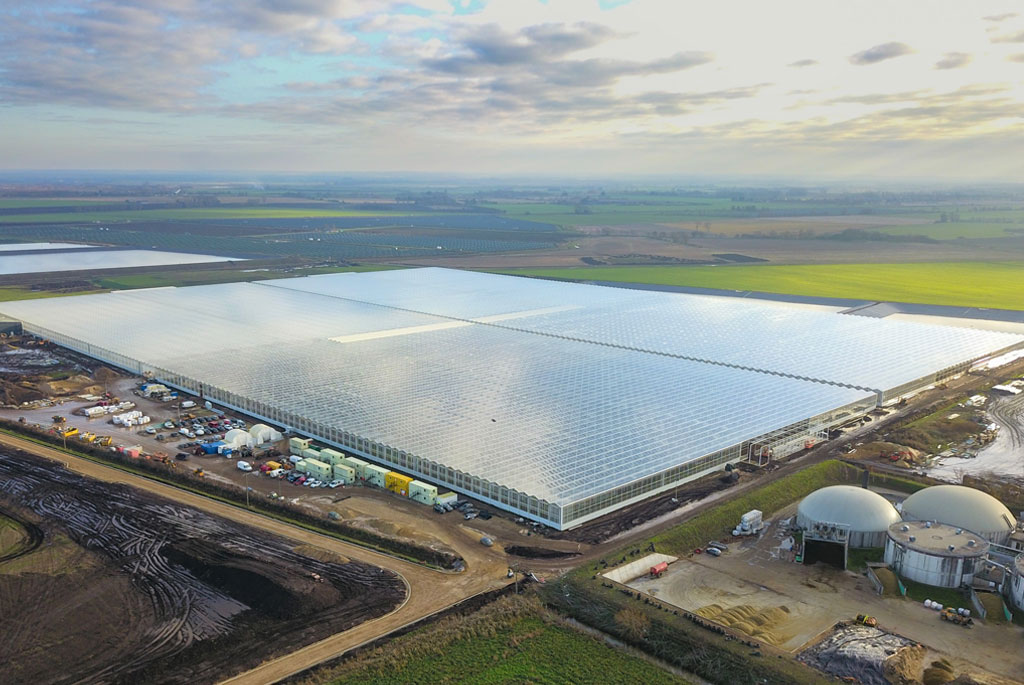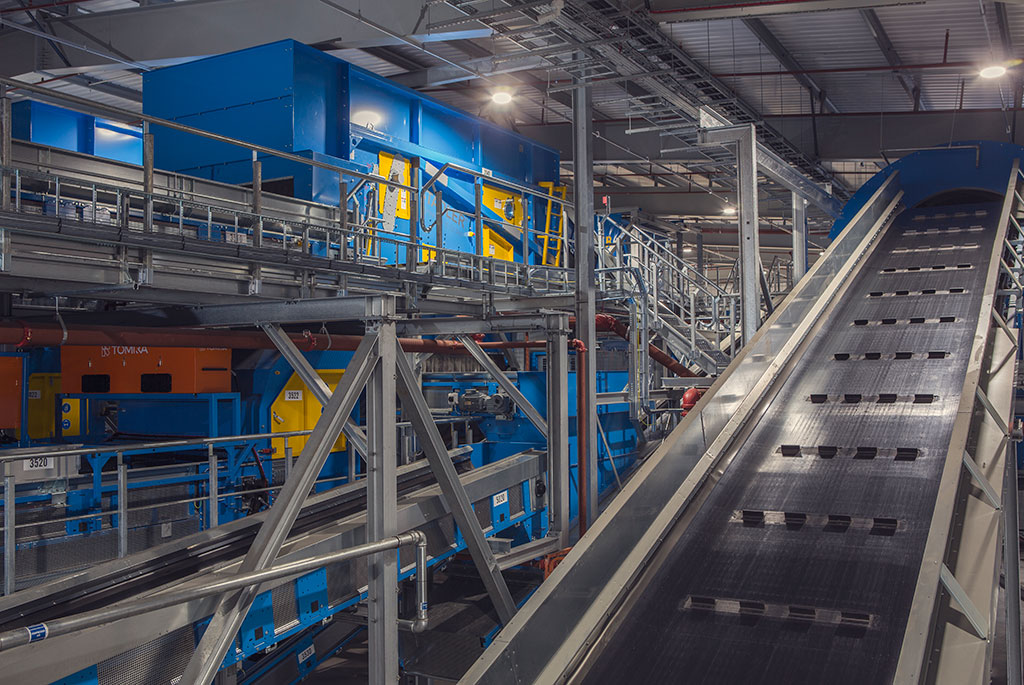Positive investments
The Trustee owns and operates several investments which it views as ESG positive, specifically its portfolio of renewable energy assets and its forestry holdings. RIEL continues to look at opportunities to improve these assets through capital expenditure and to add to the portfolio through further acquisition.
During the reporting period, the Trustee has made two new positive investments:
-
A world first renewably heated greenhouse
As reported last year, the Trustee has constructed a large, 22-hectare, greenhouse near Ely, Cambridgeshire. The supply of heat for the greenhouse is from a nearby reservoir, using heat pumps to provide water at ~50°C. Half of the greenhouse is artificially lit with an LED lighting system. The power for the heat pumps and lights is supplied by gas CHPs (combined heat and power), which also supply high temperature (90°C) heat and CO2. The CO2 is captured from the CHP exhaust and supplied to the greenhouse to support an elevated CO2 environment (~1,100 ppm) for growing. This greenhouse is now operational and is producing food.

Helping transition to net zero greenhouse gases and reduce food miles through investing in the energy efficiency of a large greenhouse in Cambridgeshire, UK.
Image by Greencoat Capital.
-
Materials recovery facility
Construction was completed on Nine Mile Point materials recovery facility near Newport, Wales sorting 100ktpa of mixed waste to recover recyclable materials and to produce solid recovered fuel. The plants reduce the quantity of waste sent to landfill and produce a fuel that displaces some coal in cement production.

Oakleaf Recycling Plant, Staines on Thames, UK.
Image by Greencoat Capital.
Investment policy
Due to its strategy change, the Trustee will no longer be making investments specifically to meet ESG or climate goals. The Trustee will continue to approve capital expenditure in existing assets and will be selling assets. In these processes, the Trustee will keep ESG issues in mind and continue to apply the principles in the ROP when approving expenditure and when planning those sales. The expectation is that climate positive real assets should continue in operation and possibly be further developed after sale. The Trustee is hopeful that efforts it has made to improve the climate credentials of real assets and the data supporting these improvements will help in asset marketability. Sales of real assets will reduce the Fund’s exposure to physical climate risks and in the case of real estate in particular, will reduce the Fund’s exposure to transition risks, as policy pressure to increase environmental performance of buildings requires greater capital expenditure. Proceeds of sales of real assets will be reinvested in corporate credit. The Trustee’s credit managers apply the ROP.
